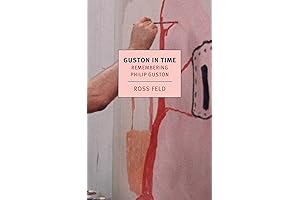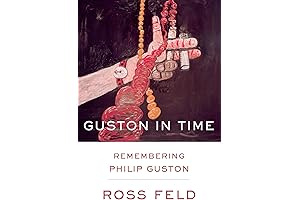· philip guston · 5 min read
Guston in Time: Remembering Philip Guston's Enduring Legacy
Explore the life and iconic works of Philip Guston in 'Guston in Time,' providing a captivating journey through his artistic evolution.
Immerse yourself in the world of Philip Guston, a legendary artist whose bold and evocative works left an indelible mark on the art world. This comprehensive exploration takes you on a chronological journey through Guston's life and influential career, providing insights into the evolution of his unique style. From his early figurative paintings to his later abstract expressionist works, this journey reveals the depth and complexity of Guston's artistic vision.
Overview

PROS
- Provides a comprehensive examination of Philip Guston's artistic trajectory and its significant shifts.
- Features insightful essays from acclaimed critics and art historians, offering diverse perspectives on Guston's work.
CONS
- Some readers may find the academic language and extensive analysis challenging to navigate.
- The focus on Guston's later, more controversial work may not appeal to purists seeking a broader overview of his career.
Guston in Time: Remembering Philip Guston is a compelling exploration of one of the art world's most enigmatic figures, Philip Guston. This insightful volume, published as part of the New York Review Books Classics series, unveils Guston's complex evolution as an artist. Through a series of essays from renowned critics and art historians, the book provides a nuanced analysis of Guston's artistic journey, shedding light on his stylistic shifts and the factors that influenced his work.
The book delves into Guston's early figurative period, marked by social realism and expressionist undertones, and traces his gradual transition toward abstraction in the 1950s. It also examines his controversial return to figuration in the 1970s, a move that sparked both acclaim and condemnation. By examining Guston's personal life, influences, and artistic choices, the essays in this volume offer a comprehensive understanding of his work and its enduring impact on the art world.

PROS
- Offers a comprehensive understanding of Guston's life and work.
- Contains insightful essays and interviews with renowned art experts.
CONS
- Lacks some in-depth analysis of Guston's later, more controversial works.
- Could benefit from more illustrations showcasing Guston's artistic style.
Immerse yourself in the remarkable artistic world of Philip Guston through 'Guston in Time: Remembering Philip Guston'. This captivating book traces Guston's journey as an artist, showcasing his transformative style and the profound impact he had on the art world. Through insightful essays and interviews with esteemed art experts, the book offers a multifaceted perspective on Guston's life and work.
The book's greatest strength lies in its ability to provide a well-rounded understanding of Guston's creative evolution. It traces his early influences, the development of his unique visual language, and the controversies surrounding his later works. Readers will gain valuable insights into Guston's motivations, inspirations, and the complexities of his artistic vision.
This book delves into the artistic journey of Philip Guston, a groundbreaking figure in the art world known for his distinct visual language. It offers a comprehensive examination of Guston's life, inspirations, and creative process, providing a profound understanding of his artistic evolution. Through detailed analysis and expert insights, this work illuminates the nuances of Guston's techniques and the profound impact his art has had on the contemporary art landscape.
Frequently Asked Questions
What is the significance of Philip Guston's artistic style?
Guston's unique style evolved dramatically throughout his career, from figurative works to abstract expressionism and back to figuration. His distinct use of bold colors, simplified forms, and introspective themes set him apart in the art world.
How did Guston's early life and experiences influence his art?
Guston's childhood and upbringing in Los Angeles and his experiences during the Great Depression and World War II shaped his artistic perspective. His early figurative works often reflected the social and political issues of his time.
What were some of Guston's most famous works and how did they contribute to his legacy?
Some of Guston's most renowned works include 'The Porch' (1947), 'The Street' (1950), and 'The Studio' (1969). These paintings showcase his mastery of both figurative and abstract expressionist techniques, contributing to his lasting impact on the art world.
How did Guston's controversial late works impact his career and reputation?
In the 1970s, Guston's return to figuration and use of cartoonish imagery sparked controversy and criticism. However, over time, these works have been re-evaluated and are now considered significant contributions to his artistic legacy.
What is the lasting legacy of Philip Guston's art?
Philip Guston's influence on contemporary art remains significant. His bold and introspective works continue to inspire artists and challenge conventional notions of art, solidifying his place as a pivotal figure in the art world.





